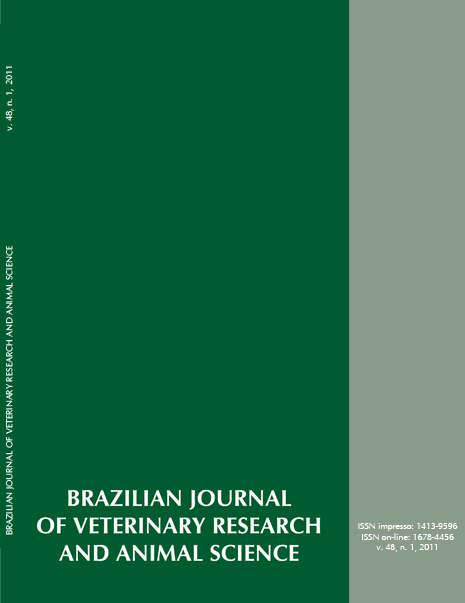Quantitative analysis of Campylobacter fetus venerealis adhesion to bovine reproductive tract cell cultures
DOI:
https://doi.org/10.11606/S1413-95962011000100009Keywords:
Campylobacter fetus, Adhesion, Target cells, Model, Primary culturesAbstract
Campylobacter fetus is the etiological agent of bovine genital campylobacteriosis, a sexually transmitted disease which is associated with reproductive losses in bovines. Campylobacter colonizes the vagina and the uterus and then infects the epithelial cells of the endometrium. The objective of this work was to develop an ex vivo model to quantify the adhesion of Campylobacter to its natural specific target cells; this is a key step for the establishment of infection and studies regarding the adherence and cytotoxicity on the natural host cells are not available. The assays were carried out by seeding Campylobacter fetus venerealis on bovine vaginal and uterine epithelial cell cultures. HeLa cells were used as control. Bacterial adhesion was corroborated by optical microscopy and determination of the percentage of adherent bacteria was performed on immunochemically-stained slides. Results are presented as percentage of cells with adherent Campylobacter and as number of bacteria per cell. In comparison to the control HeLa cells, the statistical analysis revealed that primary cultures show a higher percentage of infected cells and a lower variation of the evaluated parameters. This primary culture model might be useful for studies on cytopathogenicity and adhesion of different field strains of Campylobacter fetus.Downloads
Download data is not yet available.
Downloads
Published
2011-02-01
Issue
Section
UNDEFINIED
License
The journal content is authorized under the Creative Commons BY-NC-SA license (summary of the license: https://
How to Cite
1.
Chiapparrone ML, Morán PE, Pasucci JA, Echevarría HM, Monteavaro C, Soto P, et al. Quantitative analysis of Campylobacter fetus venerealis adhesion to bovine reproductive tract cell cultures. Braz. J. Vet. Res. Anim. Sci. [Internet]. 2011 Feb. 1 [cited 2024 Apr. 19];48(1):73-8. Available from: https://www.revistas.usp.br/bjvras/article/view/34378





